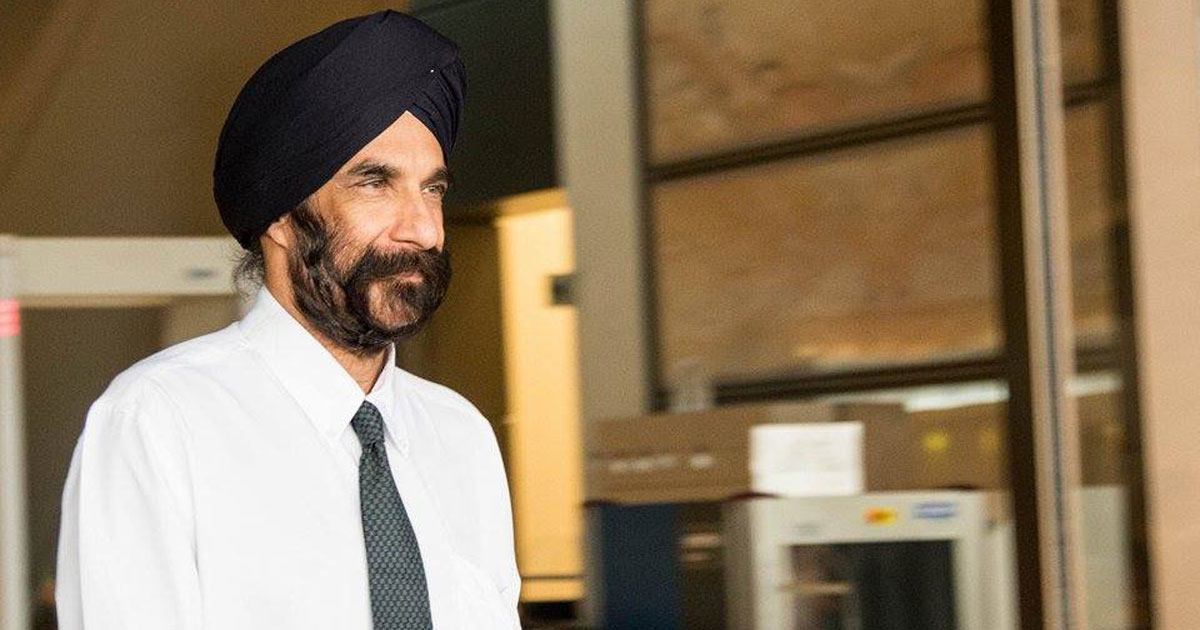In a cold, methodical and merciless fashion, Senior Counsel Davinder Singh, acting on behalf of Prime Minister Lee Hsien Loong, took apart blogger Roy Ngerng bit by bit in a three-hour morning cross-examination session on day two of the hearing Thursday.
About half of the 60-odd audience seated in the public gallery to watch the proceedings were probably young lawyers wanting to catch a glimpse of the senior counsel at work.
And the so-called cordial exchange Ngerng experienced when he cross-examined PM Lee on the stand on day one was not replicated: Within the first 15 minutes of questioning, it was evident Singh was really getting down to business and by the end of the marathon session, the exchange had turned feisty.
The presiding judge Justice Lee Seiu Kin had to interject on at least two occasions in the morning session to remind Ngerng of his duty to reply to all relevant questions put forth by the senior counsel.
This was so as Ngerng was painfully obtuse at best, and repetitive and out-of-point at worst — and was even called out by Singh at one point for evading tough questions and buying time by stalling.
Singh said at one point, "You examined him (PM Lee Hsien Loong) at length yesterday, and today, you laugh about it."
And at another, "You have the audacity to tell the court yesterday you did not have the intention to defame him."
This was when Ngerng told Singh that it was the government that should sue him, not Lee himself as a private citizen.
Regardless, we break down in point form, how Senior Counsel Davinder Singh schooled blogger Roy Ngerng in the art of law.
Step 1: Establish basic facts and Ngerng's position:
1. Ask Ngerng if he agrees PM Lee is a man of integrity.
2. Establish that Ngerng blogs extensively about CPF issues.
3. Question Ngerng's past professional credentials as a marketing person, to establish that he is capable of crafting factual statements.
4. Establish that Ngerng started his blog for a Singaporean audience.
5. Establish that Ngerng started his blog to make it popular or at least of interest to others.
Ngerng's assertion, however, was that his blog was not as popular as the plaintiff made it out to be, only receiving about 2 million views for 400 posts.
Step 2: Show that Ngerng was influencing a set of readers who were engaged with his content
6. Establish that Ngerng had actively cultivated and maintained his social media presence as he has two Facebook profiles (one personal and the other for his blog) and his Twitter account.
7. Establish that the CPF issue is a matter of concern among Singaporeans to show that he had knowledge of what Singaporeans were interested in reading, which meant there will be an active and sizeable readership.
8. Determine whether Ngerng had knowledge or awareness that his blog posts were disseminated and shared on other sites, such as HardwareZone and Singapore Daily, showing that the libel or the possibility of the libellous material was introduced and reproduced elsewhere.
9. Question Ngerng about the importance of communicating the truth to readers, a follow-up from point 3, where he was asked about his past profession.
"You're a graduate" and "you use the English language very well to communicate", Singh said at one point, referring sarcastically to Ngerng's blog which aimed or claimed to demystify the CPF issue for ordinary Singaporeans.
Step 3: Show that Ngerng was aware of the severity of the criminal charges in the City Harvest Church trial (to advance his case that Ngerng was aware that his allegation made against PM Lee was defamatory)
10. Ask Ngerng when and how much he knew about the City Harvest Church case, as Ngerng had said repeatedly he was not aware of the severity of the word "misappropriate", yet used it anyway to link the case to and highlight the CPF issue.
11. Question Ngerng if he believed PM Lee would misappropriate money.
12. Establish Ngerng's intentions while asking if he understood the meaning of the word "misappropriate".
13. Ask Ngerng if he resorted to sensationalising his blog posts to get attention. (This is a follow-up from point 5, where Ngerng said his blog was not popular and there could exist a motive for him to make an issue more sensational to gain more readership.)
14. Ask Ngerng if he understood the context of the infographic about the City Harvest Church leaders' alleged criminal activity, originally published by Channel NewsAsia.
15. Make the connection between the infographic CNA published and the one Ngerng edited, which replaced one of the pictures of the accused to a picture of PM Lee's face.
This infographic was the basis of his client's claim that he had been defamed.
16. Make Ngerng admit he had made a serious allegation against PM Lee — if not, why did he edit the chart to include PM Lee's face?
Singh said at one point just before court adjourned for lunch, "There was no need to put the photo of the plaintiff in two places."
In conclusion:
- The apology/ies issued by Ngerng was/were fake because his allegation against PM Lee in May 2014 was made with full knowledge it is defamatory.
- Ngerng has been keeping a carefully-curated blog with hundreds of posts.
- False suggestion that he only knew it is defamatory after letter of demand was served.
- Ngerng's claim of innocence is a show and also contrived.
- Ngerng was upping his own standing by lowering PM Lee's reputation.
Top photo by Ng Yi Shu
Related articles:
Questions Roy Ngerng asked PM Lee Hsien Loong during 7-hour cross-examination
If you like what you read, follow us on Facebook, Instagram, Twitter and Telegram to get the latest updates.
